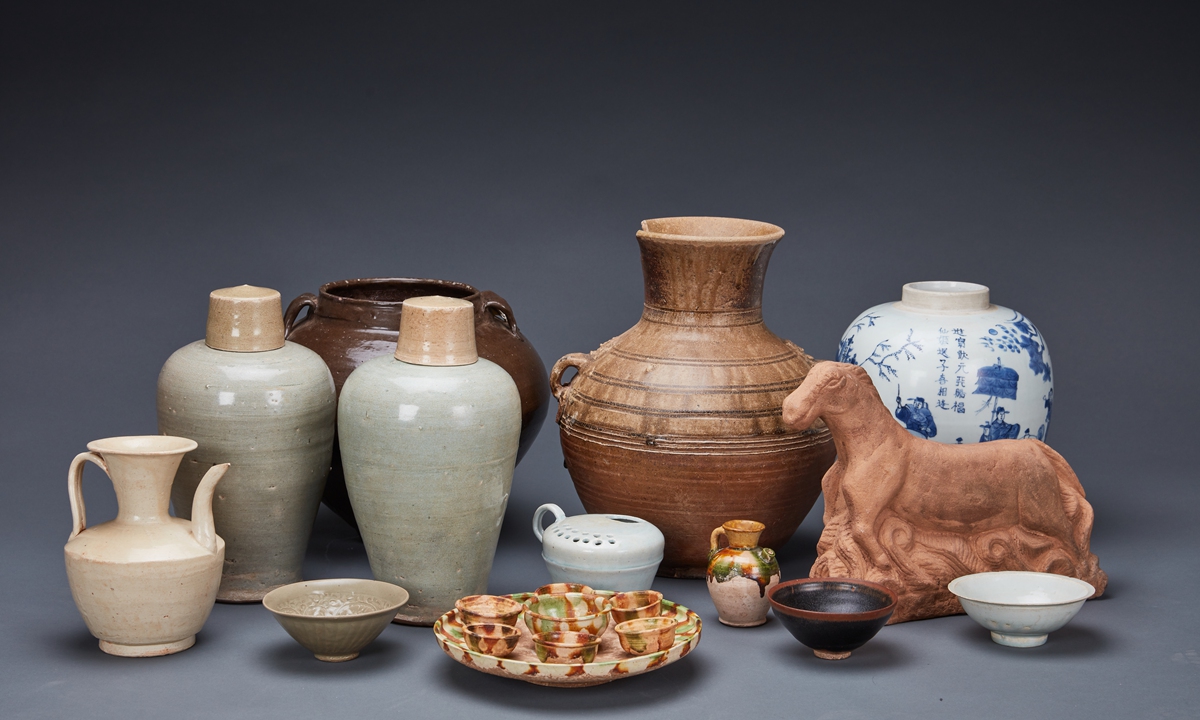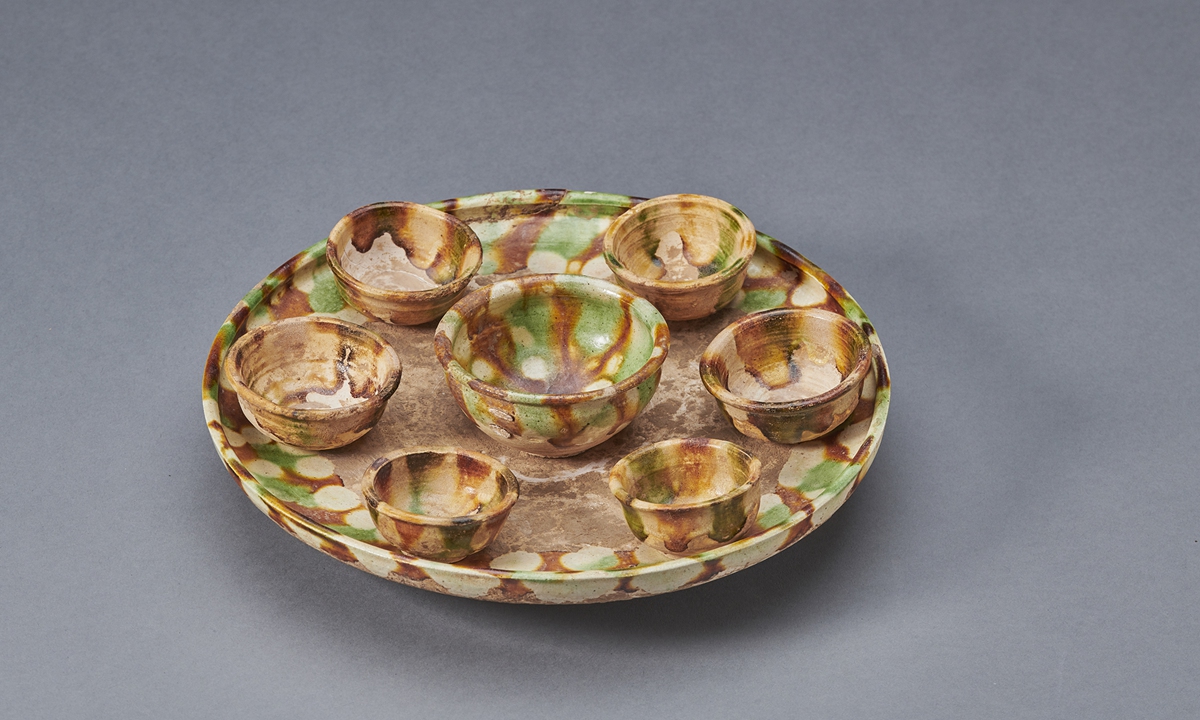LIFE / RELATIONSHIPS
68 Chinese relics returned to China from the UK amid global pandemic

A selection of Chinese relics returned from the UK Photo: courtesy of National Cultural Heritage Administration
China's National Cultural Heritage Administration (NCHA) announced on Wednesday that after 25 years' continuous repatriation a total of 68 lost Chinese cultural relics have been returned from the UK, setting a good example for international cooperation in combating illegal trade of cultural items.
"The recovered 68 smuggled cultural relics lost in the UK have reached an ideal end due to the Chinese government's efforts in transnational cultural relic repatriation over the past 25 years. This is a significant landmark for the spirit of international conventions," said Guan Qiang, deputy director of NCHA, at the press conference.
Among the 68 relics, 13 have been tentatively ranked as second-level cultural relics, 30 as third-level cultural relics and 25 as general cultural relics.
They cover of wide range of artworks such as porcelains, pottery wares and bronzes dating from the Spring and Autumn Period (770BC- 476BC) to the Qing Dynasty (1644-1911).

A plate and seven tea cups in Sancai glaze, a versatile type of pottery glaze particularly associated with the Tang Dynasty (618-907) Photo: courtesy of National Cultural Heritage Administration
The cultural relics feature a number of fine artworks such as a plate and seven tea cups in Sancai glaze, a versatile type of pottery glaze particularly associated with the Tang Dynasty (618-907), celadon and white porcelain from the Song Dynasty (960-1279) and stone carved horses from the Yuan Dynasty (1279-1368) - all of which have important historical, artistic and scientific value, said Deng Chao, deputy director of NCHA's office overseeing museums and privately-owned cultural relics.According to Guan, these smuggled cultural relics were found in the UK in 1995 during an investigation into an international cultural relic crime ring. Since the buyer of these cultural relics refused to participate in negotiations for their return, the cultural relics were seized by the British police for 25 years.
In January, the Metropolitan Police Service in London contacted the Chinese Embassy in the UK and offered to return the cultural relics to the Chinese government. They explained that the relics involved in the case had been classified as "no owner" since the purchaser's whereabouts were unknown and that the statute of limitations had been reached for prosecution of the case.
NCHA then issued a letter based on the UNESCO 1970 Convention on the Means of Prohibiting and Preventing the Illicit Import, Export and Transfer of Ownership of Cultural Property, also known as the 1970 Convention, requesting the items be returned.
After the Chinese Embassy in the UK and the Metropolitan Police Service signed a confirmation of receipt of the relics, they departed by plane from Heathrow on October 19 and arrived in Beijing on October 20.
The return of the cultural relics has been applauded by Chinese netizens, with many posting messages such as "welcome home" on social media. Some netizens have also called for a return of the cultural relics in the British Museum's collection.
However, Guan explained that the return of lost overseas cultural relics is complicated business.
Shen Binti, a lawyer at the Beijing-based Zhong-Wen Law Firm, told the Global Times that roughly speaking lost overseas cultural relics are returned to China in one of three ways, through legal channels, by holding diplomatic negotiations and by purchasing them.
Shen noted that purchasing relics overseas has been the most effective way to bring them home and that government purchases have long been a mainstay. However, in recent years, private individuals purchasing cultural relics and then donating them to museums in China has also been common. For example, Chinese tycoon Stanley Ho purchased a Qing Dynasty zodiac bronze head in 2019, which he then donated to the National Museum of China.
"The return of relics requires a lot of historical evidence, communication between countries and a legal basis, so although we hope something can be recovered, that does not mean it can be recovered successfully," Guan explained.
He emphasized the importance of international treaties in fighting the illegal trade of cultural items, noting that arranging the return of 3,000 smuggled cultural relics from the UK in 1998 was much harder than the recent effort since the UK had not yet joined the convention at that time.
"The return of cultural relics this time is indeed a successful example of international cooperation in combating the smuggling of cultural relics and promoting their recovery under the framework of the 1970 Convention," Guan said.
2020 marks the 50th anniversary of the 1970 Convention. NCHA has set up a special webpage on its official website to display photos of returned cultural relics as well as explanations of how they made their way home to celebrate this anniversary.




